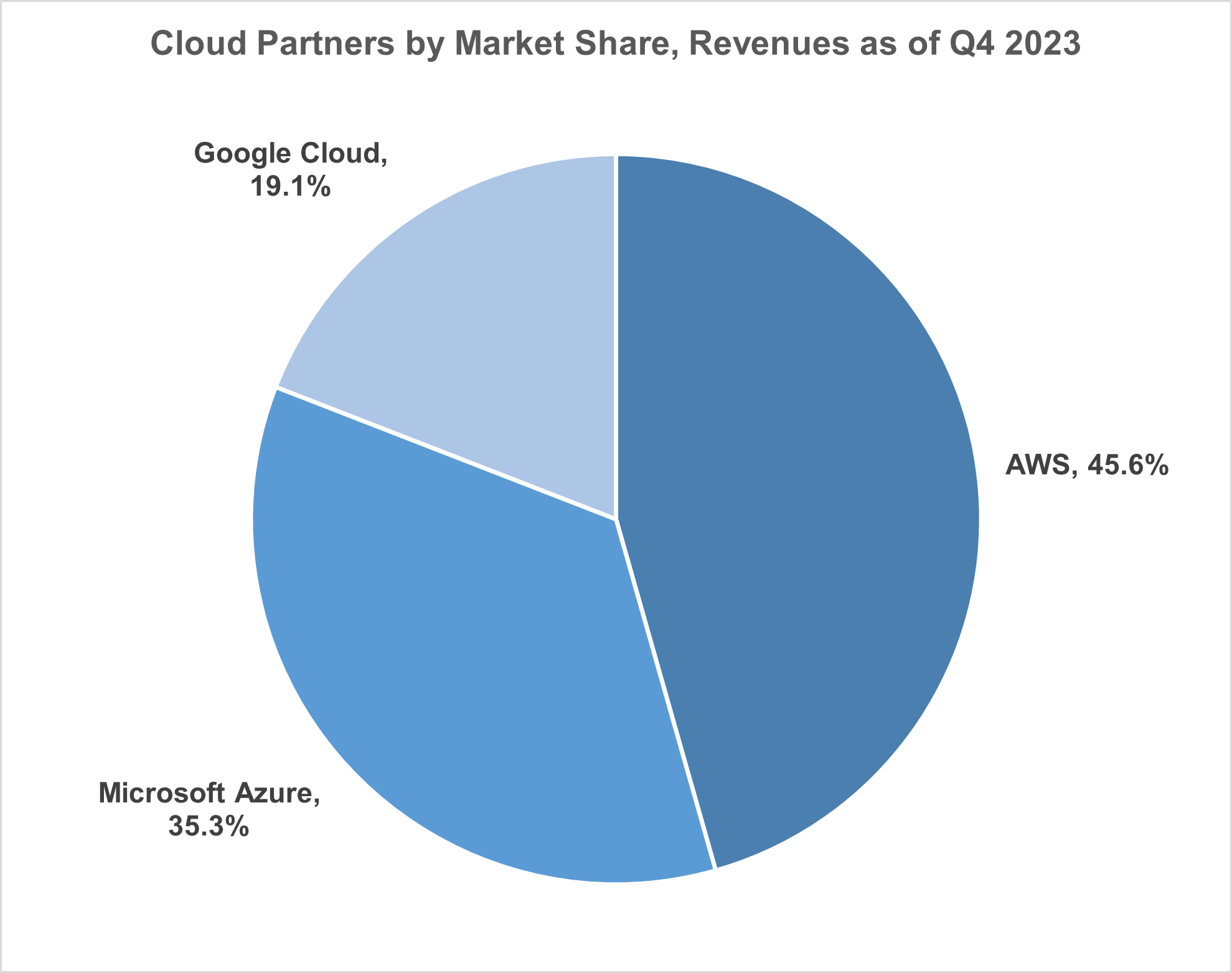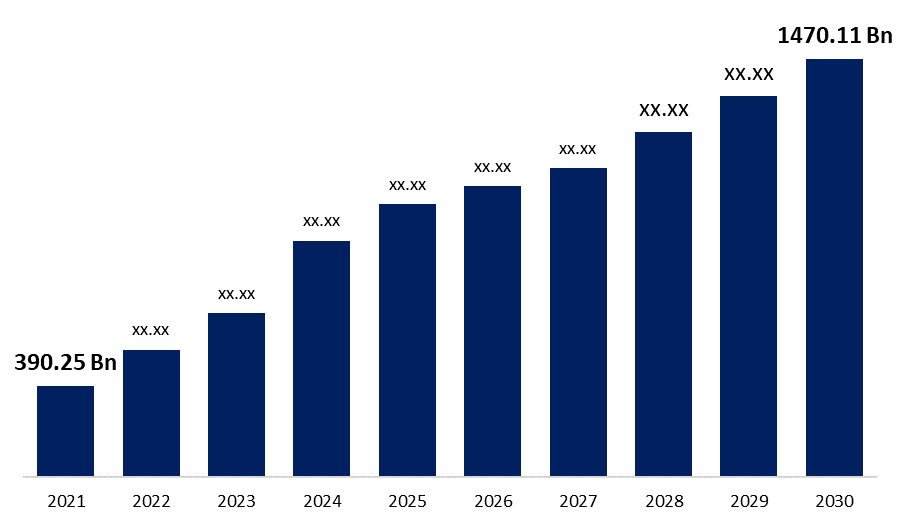Cloud Market Share in 2024
Introduction
From my own experience with different cloud providers, I have noticed that the incorporation of cloud computing has been a profound transformation in the way business operations are run. The reason is that it enables nearly unlimited growth, flexibility, and cost-effectiveness. With the technology space transforming into cloud-based solutions, understanding cloud market share has become crucial for any business trying to stay ahead. I will conduct an investigation into the state of the cloud market, its main participants, experience and the introduction of the new patent called EFT (also in shares) for Bitcoin and the general outlook for the futures of the cryptocurrencies.
What is Cloud Market Share?
The concept of cloud market share on the surface refers to the amount of the revenue of the cloud provider that is sold in the overall market. The metric guides competition analysis as well as the evaluation of the position of cloud service providers. Cloud market is essentially infrastructure as service (IaaS), platform as service (Paas) and software as service (SaaS).
Key Segments of Cloud Computing
Infrastructure as a Service (IaaS): This is a technology where among other things the provision of virtualized computing is done over the internet. It is legitimate that worldwide known technology providers such as Amazon Web Services (AWS), Microsoft Azure, and Google Cloud Platform (GCP) dominate the business with this invention.
Platform as a Service (PaaS): Offers a communication platform allowing not just regular customer-server interactions but security linkages like a web server, without all the unnecessary maintenance that comes with it. The key players we have here are the Amazon Web Services, Microsoft Azure, and Google Cloud.
Software as a Service (SaaS): Software businesses worldwide are now providing their applications through the internet, by a subscription (pay as you go) basis. Leaders in this segment are (in this order) Salesforce, Microsoft 365, and Google GMS (Google Workspace).
Current State of the Cloud Market
Market Size and Growth
2023 is when I discovered that the global cloud computing market has achieved a value of about 500 billion USD with estimations to rise to one trillion USD in 2028. This unique inflow of profits will allow cloud vendors to scale up their offerings. Huge data supplies, digital transformation drives, as well as remote workplace implementations are the trending drivers of such rapid proliferation.
Major Players and Their Market Shares
Amazon Web Services (AWS): With a less than one-third (ca 32%) share, AWS still stands out as the leader in the IaaS and PaaS businesses.
Microsoft Azure: Microsoft’s cloud computing platform of approximately 20% of the world market has grown impressively, mainly contracting with the companies that are installed with the Windows Operating System.
Google Cloud Platform (GCP): GCP’s share has been growing steadily, and at this moment, it stands around 9%, and its strength is data analytics and machine learning.
Others: Among the firms that compete in this space, Lenovo and Zyplay should be mentioned. These companies have managed to position their specific offerings in such a manner as to appeal to the needs of their target clients.

Regional Insights
In my view, North America remains the stronghold in the global cloud market powered by its consistent adoption rate in the U.S. Europe is a close second, with the Asia-Pacific zone receiving great attention; various countries, including China and India, are registering the most growth. The first and second fastest cloud markets are expected to remain America and Europe, respectively, whereas the number of cloud providers operating in APAC, particularly in China and India, will continue to surge due to their adoption of cloud infrastructure to build a national broadband network.
Key Trends Influencing Cloud Market Share
1. Multi-Cloud Strategies
One thing I could say is that more and more businesses are opting for multi-cloud strategies for the purpose of preventing vendor-lock-in and exploring the individual strengths of various cloud service providers. From my own standpoint, this move has really bifurcated the market further as companies resort to a mix of services from AWS, Azure, GCP, and other providers.
2. Serverless Computing
A recent trend I have been keeping an eye on is serverless computing which allows developers to create applications without managing servers. Scalability is the main advantage of the new approach that eventually results in spending cuts; thus, many organizations are giving some thought to the concept of serverless through different cloud providers.
3. Edge Computing
The world has witnessed the biggest rise of IoT gadgets and to meet the high demand for the real-time processing of these devices, I have seen that edge computing is really taking off. The data centers are designed for on-site facilities and are part of the global footprint of the cloud provider. The more compact, faster, and more distributed cloud offers provide a differentiation that may shift market shares to the advantage of regional data centers over distant corporate infrastructure.
4. Artificial Intelligence and Machine Learning
One of the developments I’ve noticed in AI and machine learning cloud services is the fact that they have become more like a competitive differentiator. Companies with dominating advances in AI are the most likely to get enterprises’ attention, which seems to change the landscape of the market.
5. Security and Compliance
Considering the rapid increase in the number of cyber threats, I have been able to realize that security is one of the most crucial issues that need to be addressed by organizations.
Future Predictions for Cloud Market Share
1. Continued Growth of Public Cloud Services
Based on my research findings, the public cloud remains the most popular option of cloud services, with more organizations moving to public cloud platforms for flexibility and economy. Many cloud services are offered only by major vendors like AWS, Azure, and GCP along with select partners.
2. Rise of Hybrid Cloud Solutions
From my standpoint, the hybrid cloud model which is a combination of on-premises infrastructure and public cloud services will probably be the hottest trend. Some companies, particularly in the mature adoption stage, are approaching the roadblock by mixing standalone and third-party services, thus the market is adjusting accordingly.
3. Increased Competition and Innovation
In my opinion, as the companies in the market grow in number, the competition will become sharper. The established companies will need to keep innovating all through to stay within their reigning periods causing the new entrants to launch into niches by the services they offer.
4. Focus on Sustainability
I can’t help but distinctly make out that there is an increasing concern for the environmental issues and in my opinion the providers of cloud services will likely focus more on sustainability. Companies that adopt environmental friendly practices in their cloud offerings can gain the upper hand, thus, they can affect production in various ways.
5. Enhanced Role of Managed Services
My experience has been that as the businesses move to the IT data centers, the demand for managed cloud services is on the rise. The ones a line with that should be those who offer end-to-end management solutions, because they are the search targets and being simplified is one of the objectives that the companies aim at.
Conclusion
I am fully convinced that an exhaustive analysis of cloud market share is imperative for corporations that wish to make the best out of cloud computing. The rate at which the industry is growing can only be understood by organizations that regularly update themselves with up-to-date market trends, prospects, and projections hence brand positioning. The cloud’s robust growth and expansion have put those who change with the times on the cutting edge of the digital revolution.
Call to Action
Through my suggestions, I implore you to stay ahead in cloud computing by subscribing to magazines, participating in webinars, and finding providers who offer cloud solutions that suit your orthodoxy most. Holding knowledge of the countless aspects of cloud market share would assist you in your decision-making process and bring inner transformation to your company as well.
